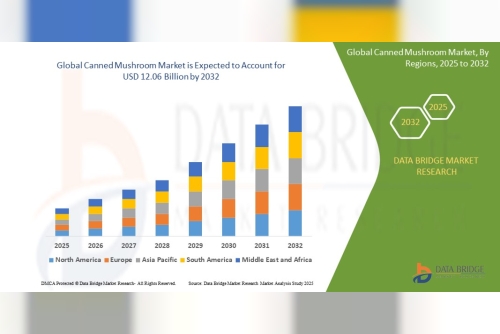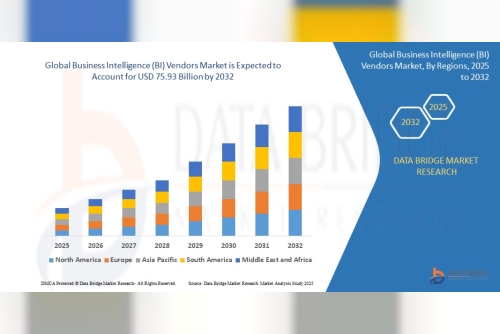Ever wondered how products get from a factory halfway across the world to your doorstep? That’s where supply chain management (SCM) comes in. It’s all about coordinating the flow of goods, from raw materials to finished products, and making sure everything runs smoothly along the way. For businesses, having an efficient supply chain means keeping costs low, meeting customer demands, and staying ahead of the competition.
In this post, we’ll break down what supply chain management is and why it matters more than you might think.
Key Takeaways
Supply chain management (SCM) coordinates the entire process from raw materials to finished products, optimizing costs, meeting demands, and maintaining a competitive edge for businesses.
SCM has a long history, evolving from ancient trade systems to modern digital networks, influenced by technological advancements and shifts in global business practices.
Effective logistics within SCM ensures timely, cost-effective delivery of goods by managing transportation, warehousing, inventory, and order fulfillment, thus improving customer satisfaction.
Demand planning, inventory management, supplier relationships, and risk mitigation are essential SCM concepts that optimize processes, reduce waste, and enhance overall business efficiency.
History of Supply Chain Management
Supply chain management (SCM) is a concept that has evolved over centuries, shaped by technological advancements and changing business needs. While the term itself is relatively modern, the practices that form the foundation of supply chain management have been around for a long time. Let’s take a look at how SCM has developed throughout history.
1. Early Trade and Barter SystemsThe roots of supply chain management can be traced back to ancient times when humans first started trading goods. Early civilizations such as the Egyptians, Greeks, and Romans engaged in barter systems and trade routes, exchanging products like spices, textiles, and precious metals.
2. The Industrial Revolution (1760-1840)The Industrial Revolution brought significant changes to manufacturing and distribution. Mass production became possible with the invention of machinery, leading to the growth of factories. As a result, the need to transport large quantities of goods grew, giving rise to advancements in transportation such as railways and steamships.
3. Early 20th Century: The Rise of Mass ProductionIn the early 1900s, mass production methods introduced by Henry Ford and others revolutionized manufacturing. The assembly line technique allowed for faster production, but also required better management of materials, labor, and distribution.
4. Post-World War II Era: The Birth of LogisticsAfter World War II, logistics became a recognized field, with military strategies influencing business practices. Companies began to see the importance of efficiently managing the flow of materials and goods. The development of computers also made it possible to track inventory and automate some logistics tasks.
5. 1970s-1980s: The Evolution of Supply Chain ThinkingThe term "supply chain management" started gaining popularity in the 1980s as companies recognized the need to integrate all parts of the supply chain, from suppliers to customers. This period also saw the introduction of Just-In-Time (JIT) manufacturing, a system aimed at reducing waste by receiving goods only as they are needed in the production process.
6. 1990s-2000s: Globalization and Technological AdvancementsThe rise of the internet and advancements in technology transformed supply chain management in the 1990s and early 2000s. Businesses expanded globally, sourcing materials and selling products worldwide. New software solutions like Enterprise Resource Planning (ERP) systems allowed for better planning, tracking, and integration of supply chain activities.
7. 2010s-Present: The Digital Age and Modern ChallengesToday, supply chain management is more digital and data-driven than ever before. Innovations such as artificial intelligence (AI), blockchain, and the Internet of Things (IoT) are being used to optimize logistics, forecast demand, and track products in real time. The COVID-19 pandemic also highlighted the need for resilient supply chains that can withstand disruptions.
What is Supply Chain Management in Healthcare?Supply chain management in healthcare refers to the process of planning, sourcing, delivering, and managing the flow of goods and services essential for patient care. It involves everything from the procurement of medical supplies, equipment, and pharmaceuticals to managing the logistics of getting these items to the right place at the right time.
The goal is to ensure that hospitals, clinics, and other healthcare facilities have the right materials available to provide quality care, while also minimizing costs, avoiding wastage, and maintaining safety standards.
Why is Supply Chain Management Important in Healthcare?Healthcare supply chain management is crucial because it directly impacts patient care, safety, and operational efficiency. Here’s why it matters:
Patient Safety: Proper supply chain management ensures that medical supplies and equipment are of high quality, properly sterilized, and available when needed. This reduces the risk of errors and enhances patient outcomes.
Cost Efficiency: By managing inventory levels and avoiding overstock or shortages, healthcare providers can reduce costs and save money. Effective supply chain management also helps in negotiating better deals with suppliers.
Compliance: Regulatory requirements in healthcare are strict. Proper management ensures that all products meet quality standards and are compliant with healthcare regulations.
Operational Efficiency: It allows hospitals and clinics to function smoothly by having the right materials on hand without delays. This efficiency extends to reducing administrative workloads, as supply chain automation can streamline processes.
Key Components of Healthcare Supply Chain ManagementProcurement: This involves sourcing and purchasing medical supplies, drugs, and equipment from reliable suppliers. The focus is on getting high-quality products at the best prices.
Inventory Management: Ensuring that the right amount of supplies is available. Too much inventory can lead to waste, while too little can disrupt patient care.
Logistics and Distribution: This aspect covers the transportation and delivery of supplies to healthcare facilities. It’s important for items to arrive on time and in good condition.
Data Management: Using technology to track inventory levels, delivery schedules, and supplier information. Data analytics can help predict future demand and optimize the supply chain.
Supplier Relationship Management: Building strong relationships with suppliers can lead to better pricing, improved service, and quicker resolution of issues.
What is Logistics in Supply Chain Management?Logistics in supply chain management refers to the process of planning, implementing, and controlling the efficient movement and storage of goods, services, and information from the point of origin to the point of consumption. It plays a crucial role in ensuring that products reach customers in a timely, cost-effective, and safe manner.
In simple terms, logistics is all about making sure the right products get to the right place at the right time, in the right condition, and at the right cost. It covers everything from transportation, warehousing, and inventory management to packaging and order fulfillment.
Key Functions of Logistics in Supply Chain ManagementTransportation: Moving goods from one location to another, whether by road, rail, sea, or air. Choosing the right mode of transportation is essential for balancing cost and speed.
Warehousing and Storage: Storing products in facilities until they are needed. This involves managing inventory levels to avoid overstocking or stockouts and ensuring that items are stored in suitable conditions.
Inventory Management: Keeping track of the products available, where they are located, and how much is needed to meet customer demand. This helps in reducing waste and minimizing costs associated with excess inventory.
Order Fulfillment: Processing customer orders and making sure they are picked, packed, and shipped accurately and on time.
Packaging: Protecting products during transportation and making sure they are properly labeled for easy identification and handling.
Reverse Logistics: Managing the return of goods, whether due to defects, recycling needs, or customer returns. This also includes refurbishing or disposing of products as needed.
Five Key Concepts in Supply Chain ManagementSupply chain management (SCM) involves coordinating various activities to get products from suppliers to customers efficiently. Understanding the key concepts in SCM helps businesses optimize processes, reduce costs, and improve customer satisfaction. Here are five essential concepts that form the foundation of effective supply chain management:
1. Demand PlanningDemand planning is about predicting customer needs to ensure that the right products are available at the right time. It involves using data, market trends, and historical sales to forecast future demand. By accurately predicting what customers will buy, businesses can avoid overstocking (which leads to wasted resources) or understocking (which causes missed sales opportunities).
Why It Matters: Effective demand planning reduces the risk of inventory issues and helps maintain a steady flow of products, leading to better customer service.
2. Inventory ManagementInventory management refers to the process of tracking and controlling the amount of stock a company has on hand. It involves deciding how much inventory to order, when to order it, and where to store it. The goal is to maintain optimal inventory levels to meet customer demand without tying up too much capital in excess stock.
Why It Matters: Proper inventory management minimizes storage costs, prevents product obsolescence, and ensures that items are available when needed.
3. LogisticsLogistics encompasses the planning, execution, and management of the movement and storage of goods. This includes transportation, warehousing, packaging, and order fulfillment. The aim is to deliver products to the right place, at the right time, and in the right condition.
Why It Matters: Good logistics practices ensure that products reach customers quickly and cost-effectively, leading to higher customer satisfaction and lower operational costs.
4. Supplier Relationship ManagementSupplier relationship management (SRM) is about building and maintaining strong relationships with suppliers to ensure a reliable supply of high-quality materials. This includes negotiating contracts, managing performance, and collaborating with suppliers to improve processes and reduce costs.
Why It Matters: Strong supplier relationships can lead to better pricing, faster delivery times, and improved product quality. It also helps companies manage risks associated with supply disruptions.
5. Risk ManagementRisk management in supply chain management involves identifying potential risks that could disrupt the flow of goods and finding ways to mitigate those risks. These risks can include natural disasters, transportation delays, supplier issues, or unexpected changes in demand. Having a risk management strategy helps companies respond quickly to problems and minimize their impact.
Why It Matters: Effective risk management reduces the likelihood of disruptions, ensuring that the supply chain runs smoothly even when unexpected events occur.
Trends in Supply Chain Management TodaySupply chain management (SCM) is constantly evolving to meet the demands of a dynamic market. Here are some of the key trends shaping the landscape today:
1. Digital TransformationThe digital revolution is here, and supply chains are not immune. Companies are adopting technologies like:
Artificial Intelligence (AI): AI is being used for predictive analytics, improving demand forecasting, and enhancing decision-making.
Internet of Things (IoT): IoT devices help track inventory in real-time, monitor transportation conditions, and improve visibility across the supply chain.
Blockchain: This technology enhances transparency and security, ensuring traceability of products from source to shelf.
2. Sustainability FocusAs consumers become more environmentally conscious, companies are prioritizing sustainability in their supply chains. This includes:
Green Logistics: Implementing eco-friendly transportation methods and optimizing routes to reduce carbon footprints.
Sustainable Sourcing: Choosing suppliers who adhere to sustainable practices, such as using renewable resources or reducing waste.
3. Resilience and Risk ManagementRecent global events have highlighted the need for resilient supply chains. Companies are:
Diversifying Suppliers: Reducing reliance on single sources to mitigate risks associated with geopolitical issues or natural disasters.
Building Inventory Buffers: Maintaining safety stock to cushion against supply disruptions.
4. Automation and RoboticsAutomation is revolutionizing warehouses and distribution centers. Key benefits include:
Increased Efficiency: Robots can handle repetitive tasks like sorting and packing, speeding up operations.
Cost Reduction: Automation can lower labor costs and minimize human error.
5. Data-Driven Decision MakingData analytics plays a crucial role in modern SCM. Companies are leveraging big data to:
Enhance Visibility: Analyzing data from various sources provides insights into supply chain performance.
Optimize Processes: Using data to identify inefficiencies and improve operations.
6. E-commerce GrowthThe surge in online shopping is transforming supply chains. Trends include:
Last-Mile Delivery Innovations: Companies are exploring options like drones and autonomous vehicles to speed up delivery times.
Flexible Fulfillment Options: Offering customers various delivery methods, including curbside pickup and same-day delivery.
The Future of Supply Chain ManagementThe future of supply chain management is set to be shaped by advanced technologies and a greater focus on sustainability. As businesses increasingly adopt artificial intelligence and machine learning, they will be able to analyze vast amounts of data to improve decision-making and enhance efficiency.
The integration of the Internet of Things (IoT) will allow for real-time tracking of inventory and shipments, providing better visibility and quicker responses to potential disruptions. Sustainability will also play a significant role, with companies prioritizing green logistics, such as using electric vehicles and sustainable packaging.
Additionally, businesses will focus on building more resilient supply chains by diversifying suppliers and embracing flexible operations that can quickly adapt to changing market demands. Overall, the future of supply chain management promises to be more efficient, transparent, and environmentally friendly.
ConclusionSupply chain management (SCM) is much more than just moving goods from one place to another; it’s the backbone of modern business operations. From ancient trade routes to the digital networks of today, SCM has continuously evolved to meet the demands of a changing world. Its importance lies in its ability to optimize costs, meet customer demands, and provide a competitive advantage for businesses.
In sectors like healthcare, SCM directly influences the quality of patient care and cost management. As new technologies like AI, IoT, and blockchain become more integrated, SCM will continue to grow smarter and more resilient, paving the way for data-driven decision-making and sustainable practices.
Looking ahead, the future of supply chain management is promising, with a strong focus on sustainability, digital transformation, and flexibility to navigate disruptions. Companies that prioritize these trends will not only enhance their operational efficiency but also better satisfy customers, contributing to long-term success in an increasingly complex global market.
FAQ’s
How can businesses make their supply chains more sustainable?
Companies can adopt green logistics practices, use eco-friendly packaging, choose sustainable suppliers, and optimize transportation routes to reduce their carbon footprint. Embracing sustainability helps meet consumer expectations and regulatory requirements.
What role does technology play in modern supply chain management?
Technology, such as AI, IoT, blockchain, and data analytics, enhances visibility, improves forecasting, and streamlines operations in SCM. It allows businesses to track inventory in real-time, automate processes, and make data-driven decisions.
What trends are shaping the future of supply chain management?
Key trends include digital transformation, sustainability initiatives, automation, data-driven decision-making, and the growth of e-commerce. These trends are making SCM more efficient, resilient, and eco-friendly.
What is the role of reverse logistics in supply chain management?
Reverse logistics deals with the process of returning products, recycling, or refurbishing goods. It involves managing customer returns, defective items, or outdated products, ensuring they are handled efficiently to minimize costs and environmental impact.
https://www.bpo.com.bd/blog/procurement/what-is-supply-chain-management-and-why-is-it-important












